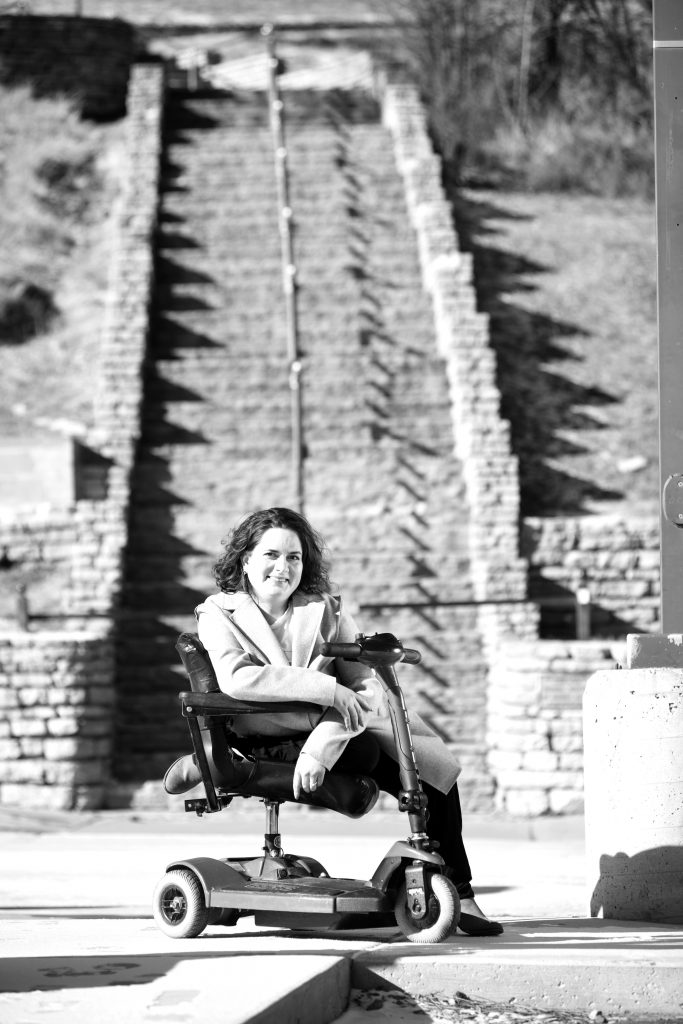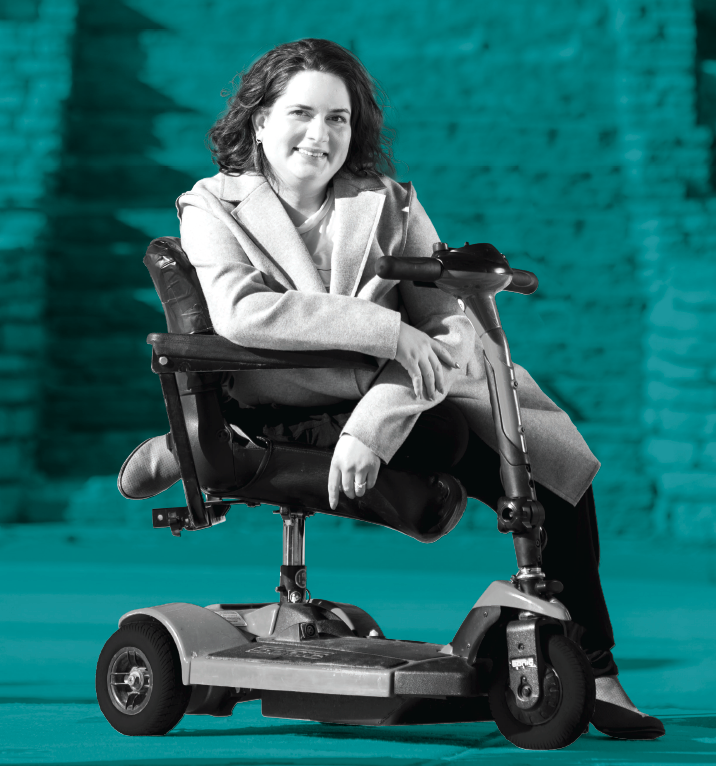Local entrepreneur Kelsey Stine has muscular dystrophy, and she relies on a wheelchair for mobility. She’s learned to navigate the Black Hills, and now she’s helping others explore with confidence.
Kelsey has needed the help of a wheelchair since she was 13. While it has come with certain challenges, she’s never let her mobility keep her from exploring the Black Hills.
“I’m pretty independent and can get around a lot, and maybe it’s just because I know the area well,” Kelsey explains. “I became more aware that there are people who are just scared to go out because of the unknown.” She started out by sharing her insight on a personal Instagram page, including reviews of local businesses and attractions people might want to visit. Before long, Kelsey had so many people reaching out to ask questions or say thank you, she realized she had the potential to do something bigger.
Realizing a dream
Accessible Black Hills officially launched in May 2021 with the help of local volunteers.
Kelsey’s goal is to make exploring the beautiful Black Hills exciting for everyone, regardless of ability. She hopes she can make it easier for families who live here to enjoy their own backyard, but also help families who are planning a vacation here.
“I just want to help them know fully what they’re getting into when they go somewhere, whether that’s in a wheelchair, using a stroller, or whatever,” Kelsey says. “Even for grandparents who want to take their grandkids out, but maybe they have trouble climbing stairs or going a long distance. Really, it’s just to help everyone have the best time they can.”
Current location listings are focused in Rapid City, with hopes of expanding to the rest of the Black Hills and South Dakota soon. Listings offer details such as location of accessible entrances and bathrooms, door widths, whether floor plans are easy to navigate, and more. There are also pictures included so visitors can get a feel for the space before going.
It takes a village
While the focus of Accessible Black Hills is on the user, Kelsey is also working to help businesses understand the need and teach them ways to be more inclusive. Many buildings around the Black Hills are historic, which means owners may have to retrofit their business to accessibility standards. This can be easier than it sounds, however, and Kelsey thinks a key part of Accessible Black Hills is education.


“The Americans with Disabilities Act was in 1990, which was only 30 years ago,” Kelsey says. “A lot of this is just education on simple things like a soap or towel dispenser in the bathroom not being too high.” She says there are often small fixes businesses can make, such as adding a ramp to a side entrance or making sure that tables are spaced far enough apart for a wheelchair to pass between them.
For now, Kelsey has launched the Accessible Black Hills website and is working with volunteers to collect information on locations around the area. So far, businesses her team has approached have been enthusiastic about the project and ready to help.
“We’re working with businesses to help them be more accessible, and getting the word out to people who want to visit. I’m excited about the future, and helping to make the Black Hills accessible for everyone,” Kelsey says.
The way ahead
Accessible Black Hills has a three-phase plan to help everyone adventure without worry:
1: Gather data on locations in the Black Hills area for their level of accessibility.
2: Showcase businesses by building a directory for tourists and locals to use, which is housed on a searchable website.
3: Support the Black Hills community by developing grant opportunities for businesses to make their location more accessible.
If your family has accessibility needs, Kelsey and her team would love to hear your perspective! You can reach out through Accessible Black Hills.
WORDS: ASHLEY JOHNSON
PHOTOS: JESSE BROWN NELSON

